Why do Artists Paint Themselves?
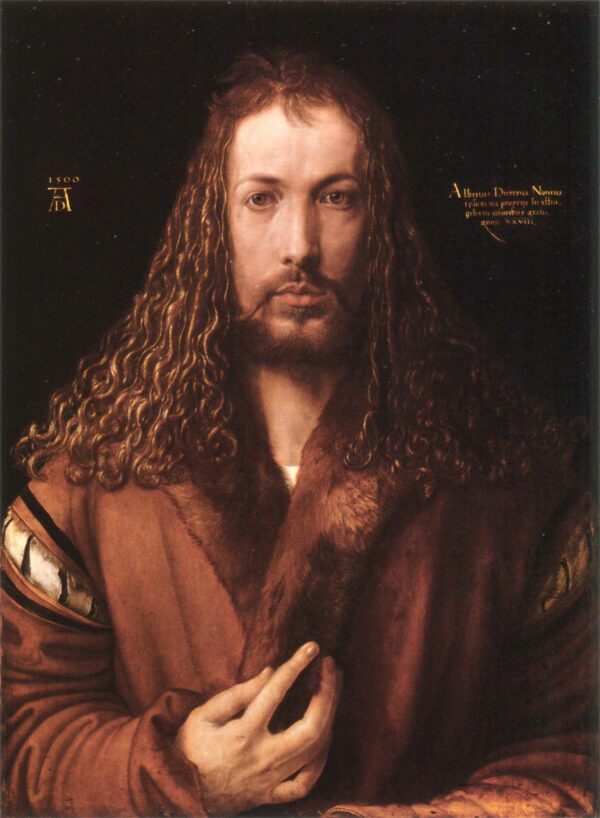
Self-portrait at 28, Albrech Durer, 1500, Oil on Wood Panel
When you look at yourself in a mirror, takes a selfie or even glance at your reflection in a shop window, we are reminded not only of what we look like but of the environment around us. We can see more about ourselves than probably anyone else can: bags under our eyes, freckles from the sun, a background of high rise buildings or perhaps (if we are lucky) an endless blue ocean.
Throughout history, *Masters of art have used self-portraiture to portray such things and more by painting an image of themselves. Artists have used self-portraits to emphasis the importance of individual identity, improve technical skill, present deep expressions of existential emotion and convey the way they feel about the world in which they live. Often, they have done so by using certain colours to help symbolise those feelings.
In this journal we thought we would look at the development of self-portraiture in art history and delve a little deeper into how certain painters have used the colour blue in the process.
The Beginnings of Self-Portraiture
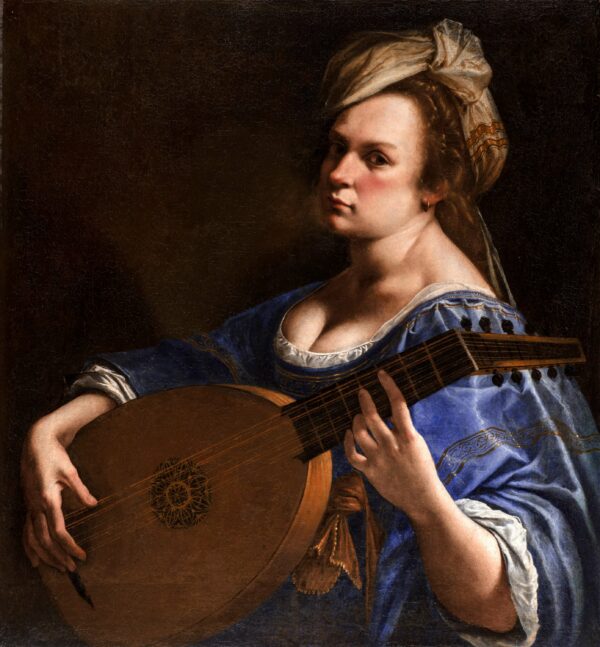
Self-portrait as a Lute Player, Artemisia Genthileschi, c.1615, Oil on Canvas
Before the 15th century, the majority of art was focused solely on religious or historical subject matter. Within these large scenes artists would occasionally include a likeness to themselves, but it wasn’t until the Renaissance that we begin to see the emergence of the aforementioned individuality through self-portraiture.
Masters such as Albrecht Durer and Leonardo da Vinci are known as pioneers of intricate and expressive self-depictions. Their extraordinary talent demonstrated through compositions dedicated entirely to themselves.
As the age of the Baroque dawned upon the European art scene, self-portraiture became a recognised genre. The 16th and 17th century saw painters such as Diego Velasquez, Caravaggio and Artemisia Gentilenschi use self-portraits to reflect their personal experience, personal status and occasionally portray themselves in a more allegorical context.
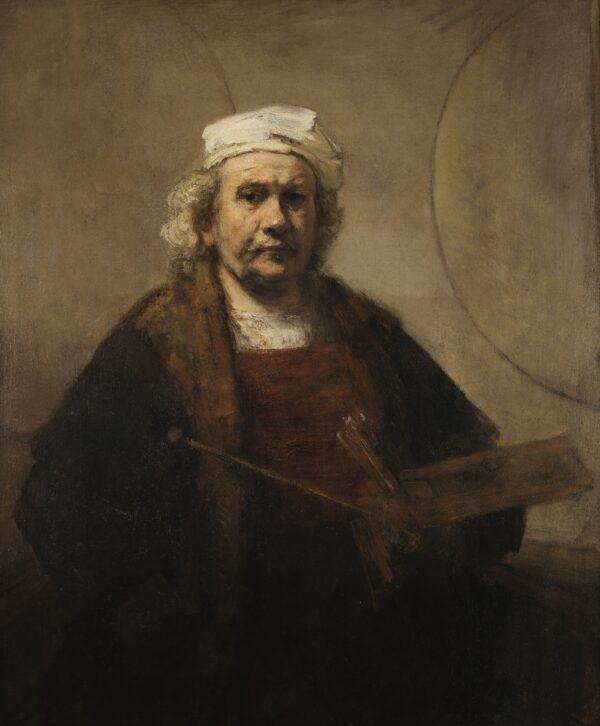
Self-portrait with Two Circles, Rembrandt, 1665, Oil on Canvas
Meanwhile, in the Netherlands, Dutch master Rembrandt van Rijn produced an immense oeuvre of self-portraits. Improving his already impressive skill in drawing by using his own face as his muse. He was relentless in mastering the technique of capturing human emotion.
Self-Portraits as Self Expression
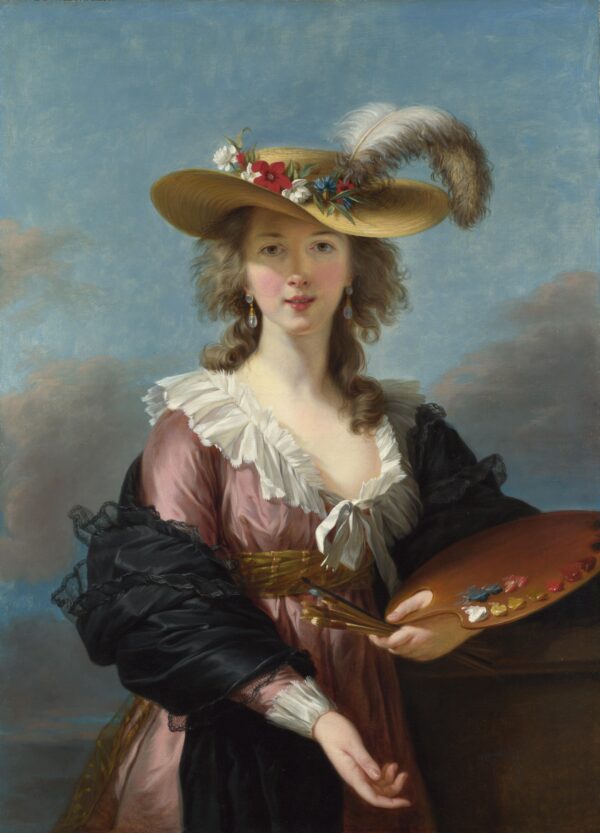
Self-portrait in a Straw Hat, Elisabeth Louise Vigee Le Brun, 1782, Oil on Canvas
Throughout the 18th and 19th centuries, Romanticism and Realism each played a role in progressing the artist’s use of self-portraiture. Across the evolutions of these movements ,we see artists such as Eugene Delecroix, Francisco Goya and Elisabeth Louise Vigee Le Brun begin to portray a greater psychological depth through painting themselves. Artists began to question their place in society and address themes such as gender, class and social change.
This only developed further as Modernists such as Van Gogh, Pablo Picasso, Frida Khalo, Salvador Dali and many others painted themselves in the advent of psychoanalysis and rise of true expressionism.
As the art of the avant garde took hold and artists explored new mediums, styles and methods of painting, self-portraiture became a crucial way for painters to present themselves in experimental and forthright ways.
Up to the modern day, contemporary artists use metaphorical symbolism, meticulously chosen colour palettes and plenty of personal flair to capture their own psyches, lived experience and reactions to modern life through the vehicle of self-portraiture.
Self-portraits and the Colour Blue
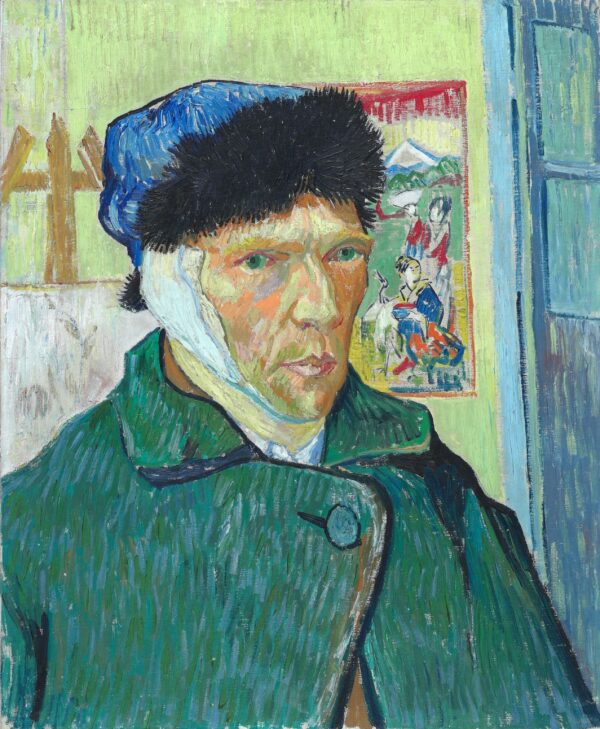
Self-portrait With a Bandaged Ear, Vincent van Gogh, 1889, Oil on Canvas
As we have touched on, colours chosen by artists to use in their self-portraits can be as significant as its use in any other genre. Arguably, more so.
One painter famous for their undeniable devotion to colour as well as their inspiring output of self-portraits is Vincent van Gogh. A key feature of the National Museum of Cardiff’s current exhibition Art of the Selfie (exhibiting until January 2025), Van Gogh produced around 35 self-portraits in his tragically short life. His reasons for doing so include both a lack of resources (funding for models) as well as a method of self-exploration during his troubled existence.
An extremely significant piece of such self-exploration can be identified in his work Self-Portrait with a Bandaged Ear. Painted in 1889, this piece depicts the results of van Gogh’s rapidly declining mental health as well as an indicator of how he felt deeply harrowed at that time.
Having removed part of his own ear to present as a gift to his love interest, van Gogh’s use of blue captures his circle of emotion – depression, heartache and despair, that led him to such a drastic action. Whilst blue can be the happiest of colours, in this work, as it makes up the majority of the composition in the background as well as in van Gogh’s clothing, blue instead becomes a reflection of his sadness, inner turmoil and melancholy.
Vivid Self-Depictions
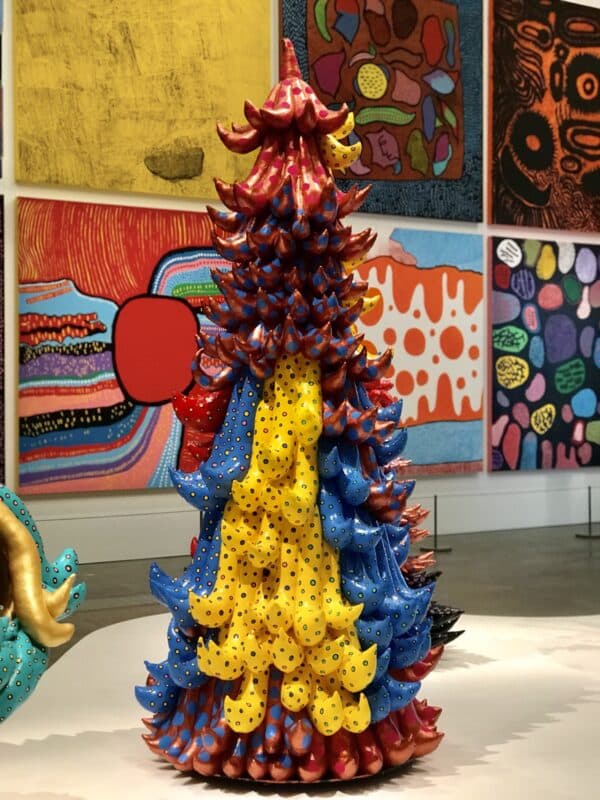
Textural scultpture by Yayoi Kusama exhibited in 2018 in Brisbane. a perfect example of Kusama’s vivid colour palette. Attribution: Kgbo
Whilst blue can be used to portray a sadder spectrum of emotions in some self-portraits, in many contemporary pieces blue has also been used to capture vibrancy, pay homage to artistic inspirations and convey more abstract concepts. For example, in the work of the Japanese contemporary artist Yayoi Kusama, blue frequently occurs in her palette of primary colours.
An artist renowned for her bold works of symbolism, statement and whimsy, Kusama uses a variety of bold blue tones in her self portrait Tobblo, painted in 2010. In the piece, Kusama presents herself in side profile as an anthropomorphic deer-like creature. She intensifies the stylised self-depiction by combining bright colours and an array of patterns, predominantly made up of a vivid assortment of blue which are counterpointed by a striking red hairstyle.
The business of the patterns are balanced by the simpler facial features of the creature Kusama sees herself as, and it is this incredible imagination for which she is revered. The use of blue in this self-portrait, not only emphasises the fantastical nature of Kusama’s work, but perhaps indicates the fun and lightheartedness of this particular piece of self-expression.
Blue to Lift the Soul
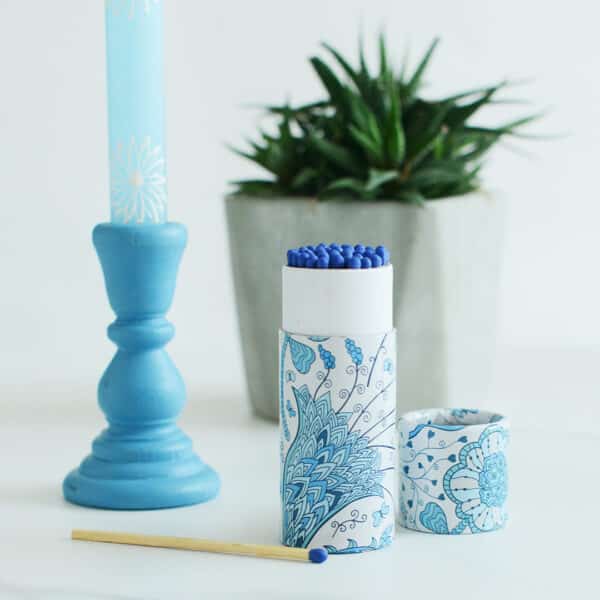
Cylinder matches in Blue Paisley, with turquoise and white
Blue has often been used to portray a spectrum of emotions in self-portraits. In our design studio, we share a love of the strength of blue, with its power to uplift, its boldness to present both a gentle wave of emotion and an energy that is dynamic and timeless. The marriage of blue and white reflects the essence of so much that we can discover within ourselves – a calm energy to face the day and start afresh.
When on the road at events, many of you share how you have found your own connection to blue, the equilibrium it brings, how it uplifts you and finds a special place within your home and personal space. We understand this and equally love to share this very specific colour passion with you.
In the midst of your busy lives, we hope you continue to find something within our collections that brings you joy and happiness, and a sense of gentle calmness.
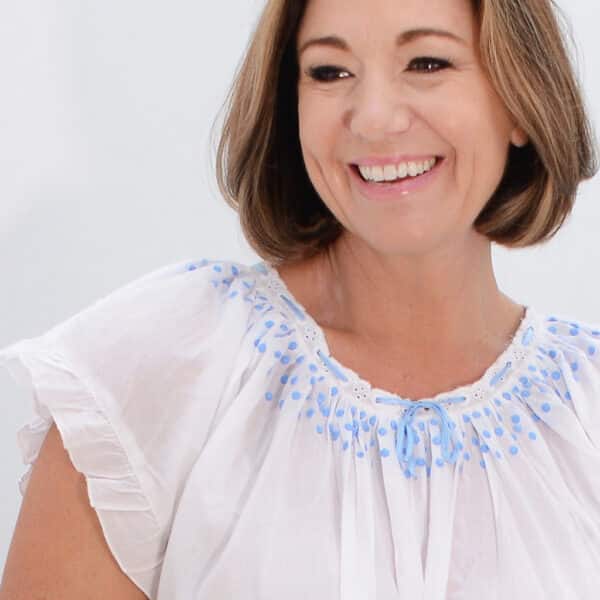
Embroidered nightdresses designed with your comfort in mind

Love is…a soft blue scarf and a kiss!
* Masters – just to be entirely clear, when we use this word we are referencing female artists as well, unless we specifically name male artists.